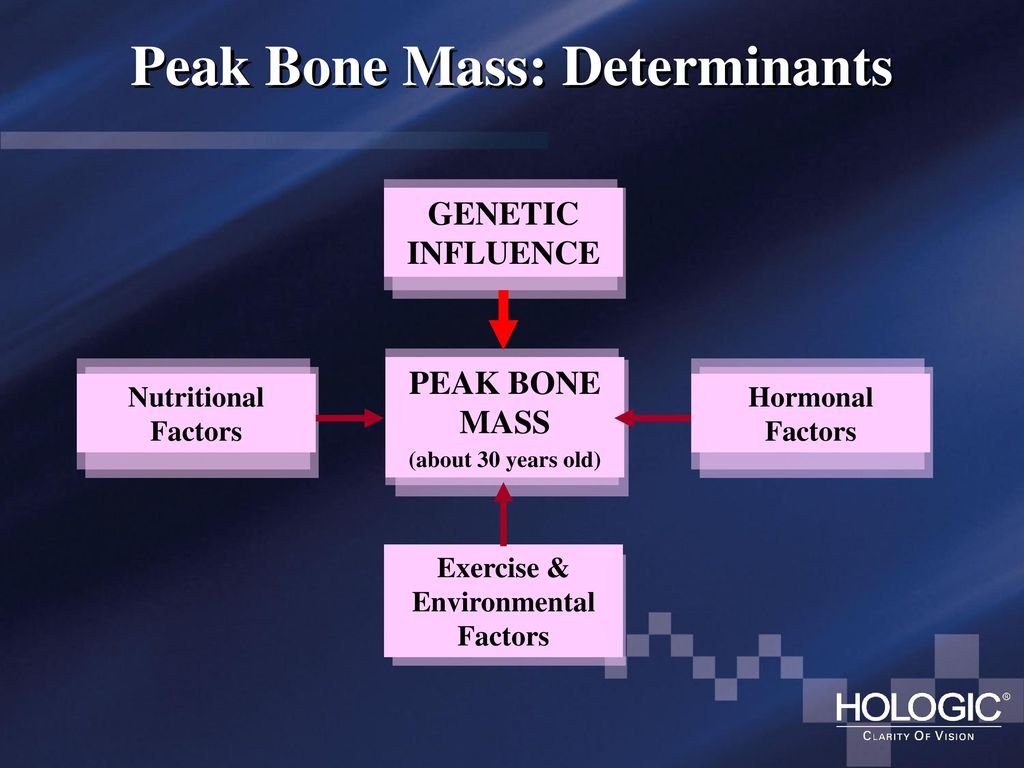Peak Bone Mass
Peak bone mass is a critical component of overall bone health. It refers to the maximum amount of bone mass that a person can achieve during their lifetime. As people age, their bone mass naturally decreases, which can lead to a range of health problems, including osteoporosis, bone fractures, and chronic pain. Understanding peak bone mass, and how to achieve and maintain it, is essential for maintaining good bone health and overall well-being


Peak bone mass is important because it sets the foundation for the amount of bone mass a person will have throughout theirlife. Achieving optimal peak bone mass during young adulthood is critical for reducing the risk of developing osteoporosis later in life. Osteoporosis is a disease in which the bones become weak and brittle, making them more prone to fracture. According to the National Osteoporosis Foundation, approximately 10 million Americans have osteoporosis, and an additional 44 million have low bone density, which places them at increased risk of developing osteoporosis.
Peak bone mass is influenced by a variety of factors, including genetics, nutrition, physical activity, hormonal status, and lifestyle habits. Studies have shown that individuals who achieve higher peak bone mass are less likely to develop osteoporosis and experience bone fractures later in life.
Genetics play a significant role in determining peak bone mass. Studies have shown that up to 80% of peak bone mass is determined by genetics. However, lifestyle habits and environmental factors can also influence bone health.
Nutrition is an essential factor in achieving and maintaining peak bone mass. Calcium and vitamin D are essential nutrients for bone health. Calcium is necessary for bone development, while vitamin D is necessary for the absorption of calcium. Foods that are high in calcium include dairy products, leafy greens, and fortified foods such as cereal and orange juice. Vitamin D can be obtained from sunlight exposure, fortified foods, and supplements.
Physical activity is also critical for achieving and maintaining optimal peak bone mass. Weight-bearing exercises such as walking, running, and weight lifting stimulate bone growth and development. Studies have shown that individuals who engage in regular weight-bearing exercise have higher bone density than those who are sedentary.
Hormonal status can also affect bone health. Estrogen plays a critical role in maintaining bone health in women. Women who experience early menopause or have low estrogen levels due to other factors are at increased risk of developing osteoporosis.
Lifestyle habits such as smoking and excessive alcohol consumption can also negatively impact bone health. Smoking has been shown to decrease bone density, while excessive alcohol consumption can interfere with calcium absorption and bone growth.
Achieving and maintaining optimal peak bone mass requires a multifaceted approach that includes proper nutrition, regular physical activity, and healthy lifestyle habits. The following tips can help individuals achieve and maintain optimal peak bone mass:
- Consume a balanced diet that is rich in calcium and vitamin D.
- Engage in regular weight-bearing exercise such as walking, running, and weight lifting.
- Avoid smoking and excessive alcohol consumption.
- Speak to your doctor about hormone replacement therapy if you are at increased risk of osteoporosis due to hormonal factors.
- Consider taking calcium and vitamin D supplements if you are unable to obtain adequate amounts through your diet.
In conclusion, peak bone mass is a critical component of overall bone health. Achieving and maintaining optimal peak bone mass requires a multifaceted approach that includes proper nutrition, regular physical activity, and healthy lifestyle habits. By prioritizing bone health throughout the lifespan, individuals can reduce their risk of developing osteoporosis and other bone-related health problems later in life.


